SUMMARY
This is AI generated summarization, which may have errors. For context, always refer to the full article.
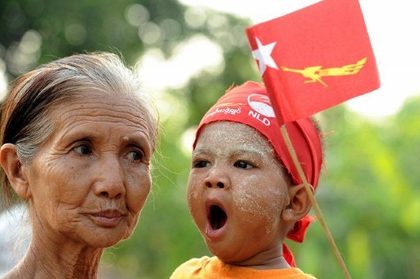
YANGON – Myanmar is holding closely watched by-elections on Sunday, April 1, in which Nobel laureate Aung San Suu Kyi is standing for a seat in parliament for the first time.
(Who is Aung San Suu Kyi, the prisoner turned Politician? Read profile here)
Following are some facts about the country:
- GEOGRAPHY: The Republic of the Union of Myanmar, formerly known as Burma, is in Southeast Asia and borders Bangladesh and India to the west, China to the north and Laos and Thailand to the east.
- AREA: 676,552 square kilometres (270,620 square miles).
- POPULATION: 57.5 million (2008, official estimate), 62.4 million (2011, IMF estimate).
- ETHNIC GROUPS: Burman (68 percent), several minorities including the Shan (nine percent) in the east, the Karen (seven percent) in the southeast, the Mon in the south and the Kachin in the northeast.
- CAPITAL: The junta in 2005 moved to an administrative capital at Naypyidaw in the centre of the country, about 400 kilometres (250 miles) north of the former capital, Yangon.
- RELIGION: Buddhist (89%), Christian (5%), Muslim (4% Rohingya — a Bengali minority), Hindu, animist (2%).
- HISTORY: Following three Anglo-Burmese wars (1824-26, 1852 and 1885), Britain annexed Burma and made it a province of British India in 1886. Burma became a separate colony in 1937 but this ended with invasion by Japan in 1942.After Japan’s World War II defeat, the Union of Burma gained independence on January 4, 1948.
- GOVERNMENT: Following a controversial 2010 election, Myanmar has a nominally civilian government but its ranks are filled with ex-generals including President Thein Sein, a former junta premier.
- ECONOMY: Despite rich natural resources (oil, gas, gold, rubies, teak, copper), almost one-third of the population lives below the poverty line, according to the World Bank. Myanmar is also the world’s 2nd-largest producer of illicit opium, after Afghanistan. The IMF predicts the economy will grow by about 5.5% in the fiscal year to March 2012, and 6% the following year, driven by commodity exports and higher investment.
- GDP PER CAPITA: Estimated at $804 (IMF, 2011)
- TOTAL EXTERNAL DEBT: $8.2 billion (2009, World Bank)
- CURRENCY: Kyat. Myanmar has announced plans to overhaul its complex exchange rate system to allow a managed flotation of its currency from April 1.
- ARMED FORCES: Up to about 400,000 personnel, according to Jane’s Sentinel.
- REBELS: The country has been plagued by insurgency in ethnic areas since independence. The new government has signed a series of tentative peace pacts with a number of rebel groups but continues to battle ethnic Kachin in the far north, with tens of thousands of civilians displaced by the conflict.
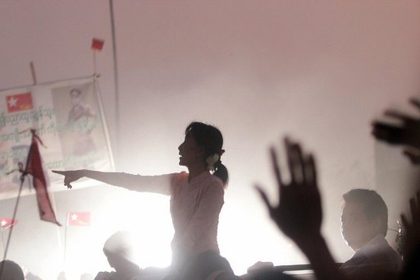
Political reforms under new Myanmar government
The following are key events in the nation, formerly known as Burma, since the end of almost half a century of military rule last year, following a controversial November 2010 election won by the junta’s allies.
2011
March 30: Outgoing premier Thein Sein, a former general, is sworn in as president. The junta is dissolved and Senior General Than Shwe retires after almost two decades in power. The West slams the changes as purely cosmetic.
July 6: Crowds of supporters greet Suu Kyi on her first trip outside Yangon since her release from house arrest in November 2010.
July 25: Suu Kyi meets with a minister of the new nominally civilian government for the first time.
August 15: The United States says it is “encouraged” by signs of a thaw between the opposition leader and the new government.
August 19: President Thein Sein meets with Suu Kyi for the first time.
September 6: Myanmar forms a National Human Rights Commission following a UN request to probe alleged abuses.
September 9: Derek Mitchell, the first US coordinator for policy on Myanmar, visits the capital Naypyidaw.
September 18: Suu Kyi tells AFP in an interview that she sees “positive” developments in Myanmar but there is still a long way to go.
September 30: Myanmar suspends a controversial Chinese-backed dam project in northern Kachin state in a rare concession to public opinion.
October 12: Some 200 political prisoners are released as part of a mass amnesty including one of the country’s most famous dissidents, comedian Zarganar.
November 17: Southeast Asian leaders agree to allow Myanmar’s government to chair the ASEAN regional bloc in 2014.
November 18: Suu Kyi’s National League for Democracy (NLD) decides to officially re-register as a political party and participate in upcoming by-elections.
November 19: Talks are organised between the government and several ethnic groups fighting a long-running struggle for autonomy and rights.
November 30: US Secretary of State Hillary Clinton arrives in Myanmar on the first top-level US visit for half a century.
Suu Kyi says she hopes to run for parliament in the by-elections.
December 1: Clinton tells President Thein Sein the US is “encouraged” by reform steps in historic talks with the new leadership.
December 2: Myanmar authorities agree a ceasefire with a major ethnic guerrilla group, the Shan State Army South. Thein Sein signs a bill allowing citizens to protest peacefully if they have permission.
2012
January 5: The NLD receives formal approval to contest the April 1 by-elections. The European Union says it will open an office in Myanmar to manage aid programmes and play a “political role”.
January 6: British Foreign Secretary William Hague says Myanmar may be “on the cusp of a new era” and calls for further reforms during a visit.
January 12: Myanmar’s government signs a ceasefire with a major ethnic Karen rebel group mired in one of the world’s longest-running civil conflicts.
January 13: The regime releases more than 300 political prisoners in a move hailed by the international community. The United States announces it will restore full diplomatic ties.
January 23: The EU agrees to ease some sanctions.
January 29: Suu Kyi is greeted by huge crowds in Dawei, southern Myanmar, in her first political trip outside Yangon since declaring she would run in the by-elections.
February 23: Suu Kyi campaigns in the conflict-riven far north in a bid to bolster support among ethnic minorities.
March 8: Suu Kyi, concerned about electoral irregularities, says dead people are appearing on voter rolls.
March 14, 2012: Suu Kyi calls for “freedom from fear” and further moves towards democracy in her first televised campaign speech.
March 21: Myanmar invites overseas election observers.
March 25: A frail Suu Kyi cancels further campaign travel following a gruelling schedule. Her party says she is recovering but needs rest.
March 30: Suu Kyi says the elections will not be “genuinely free and fair” but she will not boycott them.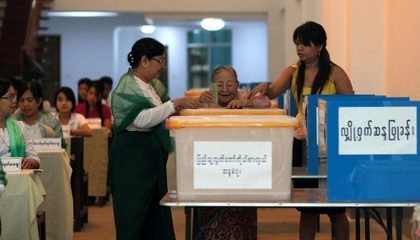
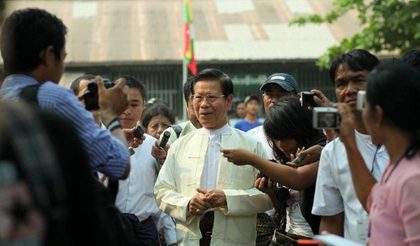
Main parties running in Myanmar elections
Seventeen parties, including 6 new to the political scene, are contesting by-elections in Myanmar on Sunday, with opposition leader Aung San Suu Kyi standing for parliament for the first time.
The parties are fielding a total of 160 candidates alongside 8 independents running for 45 seats vacated by lawmakers appointed to government positions, according to the election commission.
Here are some of the main parties standing in the vote:
NATIONAL LEAGUE FOR DEMOCRACY: Suu Kyi’s party was founded in 1988 after a popular uprising against the military junta that left thousands dead.
Two years later the party won elections in a landslide but the results were never recognised by the regime. Suu Kyi was under house arrest at the time and spent much of the following two decades in detention.
The NLD boycotted a November 2010 election that swept the army’s allies to power, saying the rules were unfair, and was stripped of its status as a legal political party. Suu Kyi was released days after the vote.
After a thaw in relations with the regime, the party was permitted to re-register to take part in Sunday’s by-elections, and it is contesting 44 of the seats.
Observers believe the regime wants Suu Kyi to win a seat in the polls to give its reformist programme legitimacy and spur the West into easing sanctions.
UNION SOLIDARITY AND DEVELOPMENT PARTY: The military-backed USDP — which won about 80 percent of the seats available in 2010 — is contesting all 45 seats on offer but will keep its majority whatever the outcome.
It was formed by then prime minister Thein Sein and other ministers who retired from their military posts ahead of the last polls. Thein Sein took office as president of the new nominally civilian government in March 2011.
The party inherited considerable financial resources and millions of members from the Union Solidarity and Development Association, a powerful pro-junta organisation that was merged into the USDP.
NATIONAL DEMOCRATIC FORCE: Formed by a group of breakaway NLD members, the NDF’s decision to stand in the 2010 elections put it at odds with Suu Kyi, who was opposed to participating because she felt the rules were unfair.
It won a handful of seats in parliament and is fielding 11 by-election candidates.
SHAN NATIONALITIES DEMOCRATIC PARTY: The party is counting on the support of the Shan, the second-largest ethnic group in Myanmar, in the three constituencies it is contesting.
Popularly known as the White Tiger Party, it is headed by prominent ethnic Shan leader Sai Aik Paung.
It came second behind the NLD in the annulled 1990 election, and is the second-largest party in the lower house of parliament thanks to a strong showing in 2010.
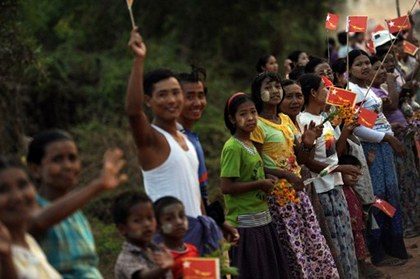
– Agence France-Presse
Add a comment
How does this make you feel?
There are no comments yet. Add your comment to start the conversation.